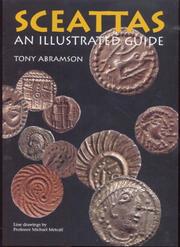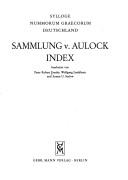| Listing 1 - 10 of 103 | << page >> |
Sort by
|
Book
Year: 1720 Publisher: A Paris: De l'Imprimerie royale,
Abstract | Keywords | Export | Availability | Bookmark
 Loading...
Loading...Choose an application
- Reference Manager
- EndNote
- RefWorks (Direct export to RefWorks)
Book
Year: 1974 Publisher: Chicago : Obol International,
Abstract | Keywords | Export | Availability | Bookmark
 Loading...
Loading...Choose an application
- Reference Manager
- EndNote
- RefWorks (Direct export to RefWorks)
Book
ISBN: 0897221877 9780897221870 Year: 1981 Publisher: New York: American numismatic society,
Abstract | Keywords | Export | Availability | Bookmark
 Loading...
Loading...Choose an application
- Reference Manager
- EndNote
- RefWorks (Direct export to RefWorks)
Book
Year: 1967 Publisher: London : Seaby,
Abstract | Keywords | Export | Availability | Bookmark
 Loading...
Loading...Choose an application
- Reference Manager
- EndNote
- RefWorks (Direct export to RefWorks)
Book
Abstract | Keywords | Export | Availability | Bookmark
 Loading...
Loading...Choose an application
- Reference Manager
- EndNote
- RefWorks (Direct export to RefWorks)
Book
ISBN: 019256305X 0191866679 0192563041 Year: 2019 Publisher: Oxford : Oxford University Press,
Abstract | Keywords | Export | Availability | Bookmark
 Loading...
Loading...Choose an application
- Reference Manager
- EndNote
- RefWorks (Direct export to RefWorks)
'Silver, Butter, Cloth' discusses what constituted 'money' in the Viking Age, and how 'money' was used? It is widely accepted that silver constituted the main form of currency. Contributors examine how silver functioned as payment but also explores the monetary role of non-silver currencies in the Viking economy.
Coinage --- Silver coins --- History

ISBN: 1905223013 9781905223015 Year: 2006 Publisher: King's Lynn Heritage
Abstract | Keywords | Export | Availability | Bookmark
 Loading...
Loading...Choose an application
- Reference Manager
- EndNote
- RefWorks (Direct export to RefWorks)
Coins, Anglo-Saxon. --- Sceat --- Sceat. --- Silver coins --- Silver coins. --- England.
Book
Year: 1644 Publisher: [London : s.n.,
Abstract | Keywords | Export | Availability | Bookmark
 Loading...
Loading...Choose an application
- Reference Manager
- EndNote
- RefWorks (Direct export to RefWorks)
eebo-0018
Silver coins --- Great Britain --- History

ISBN: 3786111286 9783786111283 Year: 1981 Publisher: Berlin: Mann,
Abstract | Keywords | Export | Availability | Bookmark
 Loading...
Loading...Choose an application
- Reference Manager
- EndNote
- RefWorks (Direct export to RefWorks)
Coins, Greek --- Silver coins --- Gold coins --- Greece
Book
ISBN: 9789042946170 9042946172 Year: 2021 Publisher: Leuven Paris Bristol, CT Peeters
Abstract | Keywords | Export | Availability | Bookmark
 Loading...
Loading...Choose an application
- Reference Manager
- EndNote
- RefWorks (Direct export to RefWorks)
This book is devoted to the only hoard of the earliest silver coins minted in the Cimmerian Bosporus (Kerch Strait). It was hidden in a dwelling destroyed by fire in 480 BC during an enemy attack on Phanagoria. The widespread opinion in academic literature is that Panticapaeum was the first Bosporan city to mint coins - in the middle of the 6th century BC or a little later. But the discovery of a hoard whose deposition date is very well established enables us to date the beginnings of coinage on the shores of the Kerch Strait to the 490s BC. The authors propose that the coins were minted not in Panticapaeum but by a union of Greek cities under the umbrella of the temple of Aphrodite Ourania Apatouros, an extra muros temple, 'most famous' in the words of Strabo, already established in the 6th century BC in Phanagoria. With the coming to power of the Archaeanactids in Panticapaeum, about which Diodorus Siculus provides information, that became the dominant city of the Cimmerian Bosporus. It started to mint coins with the (Greek) inscription 'pan'.
Silver coins --- Coins, Ancient --- Ancient coins --- Coins
| Listing 1 - 10 of 103 | << page >> |
Sort by
|

 Search
Search Feedback
Feedback About UniCat
About UniCat  Help
Help News
News